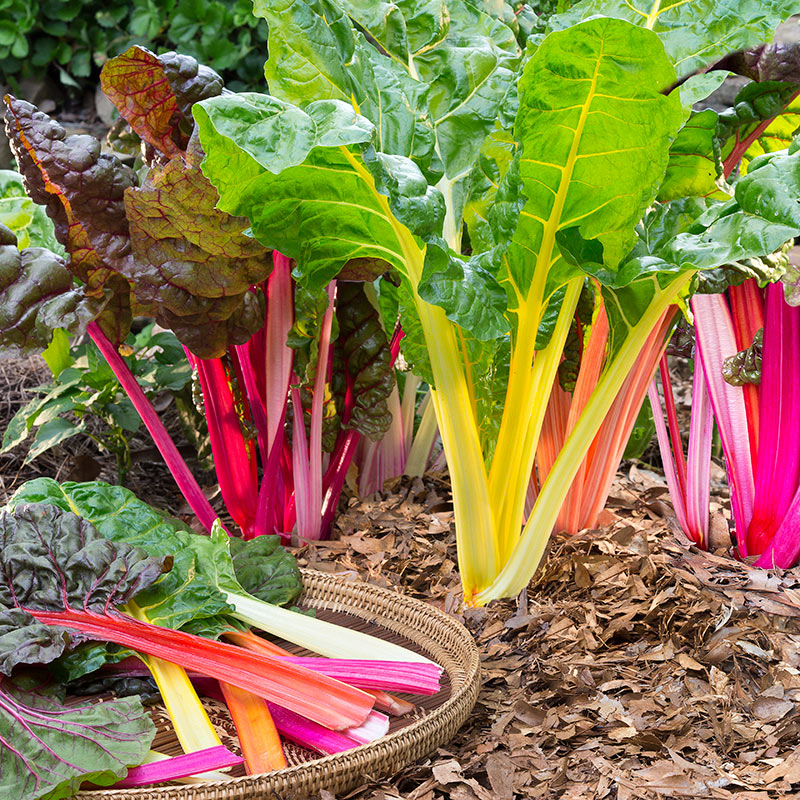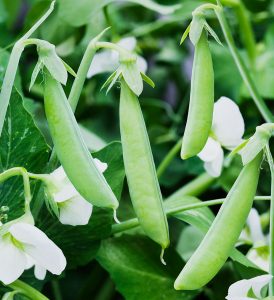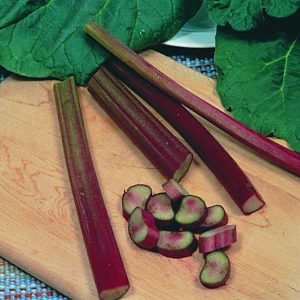

Called “Bright Lights,” this variety of Swiss chard is as pretty as it is tasty. Large leaves with a prominent, flat wide mid-rib grow in an upright rosette that is beautiful in a bed or container. Grows best in full sun, but will tolerate partial shade and even appreciates it in spring in hot climates. Highly nutritious, the leaves taste a lot like spinach, but this plant is a member of the beet family. Frost tolerant. Harvested chard freezes well.
- Light Full sun to part shade
- Leaf size 18 to 24 inches
- Matures 45+ days
- Plant spacing 12 to 18 inches apart
Light requirements Full sun to part shade. Protect plants from strong afternoon sun in warmest regions.
Planting Space 12 to 18 inches apart.
Soil requirements These greens need moist, nutrient-rich soil. Amend soil with 4 to 6 inches of compost or other organic matter prior to planting. Soil pH should be 6.0 to 6.8.
Water requirements Keep soil consistently moist throughout the growing season. Aim for 1 to 1.5 inches of water per week through rainfall or irrigation. Mulch to reduce water evaporation and keep leaves clean from splashing soil.
Frost-fighting plan Established plants tolerate light frosts (28 to 32º F). It’s a good idea to protect newly planted seedlings from late spring or early fall frosts by covering plants with a frost blanket.
Common issues Cercospora leaf spot and downy mildew may attack leaves. Watch out for aphids, mites, and caterpillars.
Harvesting Harvest leaves whenever they’re large enough to eat. Younger leaves are more flavorful and tender. Older leaves tend to be tougher; cook these for best results. Pick outer leaves first, and the plant will continue to produce new inner leaves.
Storage Refrigerate unwashed leaves in a lightly damp paper towel slipped into a very loosely closed plastic bag. Leaves store up to 14 days.



